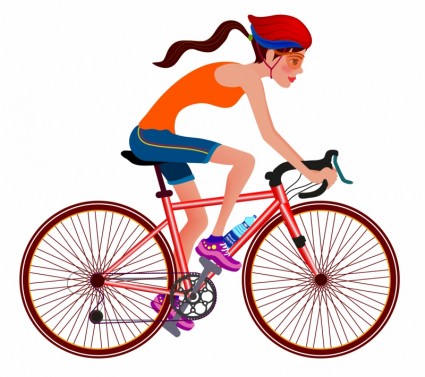WOBBLES WOBBLES WOBBLES
At first I was afraid
I was petrified
And I grew strong
And I learned how to get along
and so you’re back
Did you think I’d crumble
Did you think I’d lay down and die
Oh no, not I
I will survive
But now I hold my head up high
and you see me
somebody new
– Gloria Gaynor
Well …….THAT was epic! Back on the bike. I must say the once yearly training sessions in Lanzarote are maybe not sufficient to make me feel at home on a bike.
Now, a couple of vital tips for the novice cyclist or not so novice cyclist who is going to use cycling as cross training.
First and foremost if you are lucky enough to go out on your initial cycling rides with an ex-elite cyclist:
- Use the opportunity to benefit from his experience to take in all the useful tips about how to handle your gears (of course you need to first find out where they are). This means you will maximize your energy and hopefully be sticking to an ideal cadence of 90 rpm.
- Draft as much as you can behind him so you can concentrate on mastering the technical aspects of your bike and less on maintaining speed.
- IGNORE and pretend not to notice that he can take his hands off the handlebars and put on his wind-stopper jacket or hold the iphone and take snaps of you pedaling like a mad woman all without losing his balance. This requires decades of training where the bike eventually becomes an extension of the cyclist’s body. You will NOT get to this level but the objective is to benefit from what cycling offers in terms of cross-training – i.e. a weight-bearing cardio-vascular work-out and not all these impressive balancing acts.
The first ride is all about getting to know your bike and cycling kit better and not catering any ambitions with regards to average speed. This means:
- Playing around with the gears – knowing when to get on the “big ring” and the “small ring”. You need to maintain a regular cadence and so be attentive to the course – the up-hills and down-hills as well as the direction of the wind.
- Being aware of the dangers of traffic. Obviously you should ideally be cycling on country roads with reduced traffic but for most of us this means cycling through urban traffic before we can access these roads. Initially this is a little daunting especially since you’re trying to master your new bike.
- Learning how to maintain balance and being able to grab hold of your water bottle or wipe a snotty nose without wobbling.
- Learning to use clip-less pedals effectively. These might take a little getting used to but it is important to practice clipping and unclipping. At the beginning novice riders tend to unclip too much as the idea of suddenly having to break at a junction, traffic lights, cross-roads, circle, accident or congestion and losing your balance and falling still clipped to the bicycle is something we wish to avoid at all costs. Yet here again it is all about anticipating the aforementioned and using the gears effectively to get into an easier gear so you just need to slow down without unclipping.
- Working on pedaling technique so you don’t acquire bad habits from the beginning. Use the “wiping dog shit” technique. Literally imagine you are wiping dog-shit from your shoes by dropping your heel at the bottom of the pedal stroke.
- Enjoying the experience and not being traumatized by it so you can’t wait for your next ride! This is a hard one – after my third ride I was beating myself up because I was flying on long flat stretches of uncongested road and riding at a pathetic snail’s pace on the smallest gear up short little steep hills, spinning but not covering distance. Again this is all about experience – the more you go out, the more energy-efficient you will become. Believe in yourself and remind yourself that being perched on top of a bike is for most people a totally unnatural thing and that you will get there ………eventually. Positive thinking also helps!
My personal tip to make your first rides easier:
- Keep all your cycling kit in one place. Don’t mix it with your run kit. There is sooooo much more to take with you, the list is endless and before you know it you are out the door and you’ve forgotten something.
Remember:
- Helmet (don’t laugh – this is the last item I almost forgot)
- Energy bars – yep, when you spend all that nervous energy these are a welcome treat and booster.
- Proper wind-proof gloves as from now – remember there’s the wind-chill factor to contend with in cycling.
- A filled water bottle.
- Your sports watch if you use one on the “cycling” settings – I use a Suunto Ambit 2.
- Proper sun-glasses for cycling NOT running – Cycling glasses cover the eyes more and protect.
- Spare cash – when you cycle you cover more distance than when you run and you never know if you need it.
- A proper wind-proof jacket
- All the kit to fix a puncture – we’ll come to the nitty-gritty of this later.
- Two pairs of socks if haven’t invested in shoe covers yet.
And last of all:
- LOTS of positive energy and a smile
follow me on Twitter @girwhatcycles
Join us on STRAVA
Thanks to SCOTT SPORTS and SUUNTO for the support and backing
Check out SCOTT HERE
Check out SUUNTO HERE





![Suunto_logo [ConveWHITE_rted]](https://iancorless.org/wp-content/uploads/2014/10/suunto_logo.jpg?w=150&h=90)